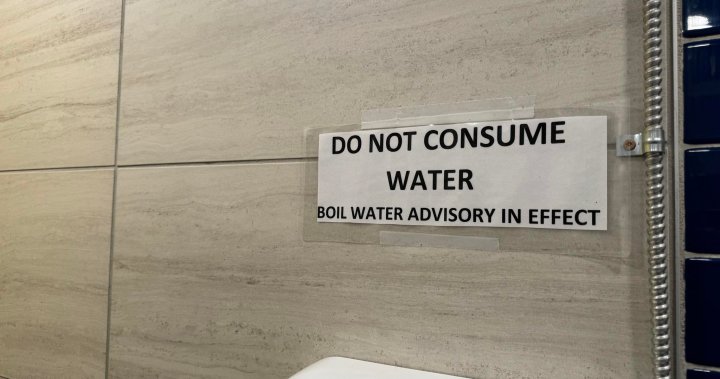Kelly Owlijoot first thought of becoming a helicopter pilot while working as a wildlife technician based in Arviat, Nunavut.
It wasn’t an obvious career choice. Even though Nunavut relies on air travel for so many things, Inuit have been traditionally under-represented in the aviation industry.
That’s now changing and Owlijoot, 46, hopes to inspire more Inuit to follow in his footsteps.
He decided to become a pilot when he was working with biologists from the Nunavut government’s Environment department, studying the migration and habits of Qamanirjuaq caribou herd. Sometimes that work would take him to the skies, riding in helicopters over parts of Nunavut’s Kivalliq region, Manitoba and Saskatchewan.
“I would be in the back, tallying what the biologist would say, like, ‘a cow, cow, bull, bull, calf, yearling, yearling.’ And I had to write them down and I couldn’t even look out at the caribou and stuff,” Owlijoot recalled.
He did that work for a couple of years, before realizing there was another career he really wanted.
“I started thinking, why am I not sitting up there? Like, maybe I could become a biologist or a pilot? So I had to pick between the two.”
He chose to be a pilot.
Pilot school
In 2020, Owlijoot was accepted into Prairie Helicopters Inc.’s flight training program in Gimli, Man., 90 kilometres north of Winnipeg.
But he also needed to find the $97,500 to pay for the training.
Owlijoot applied for scholarships and funding through the Nunavut Government and the Kivalliq Inuit Association. He wasn’t sure his application would be accepted, but it was and he ended up receiving financial support from both.
“I didn’t know what to say. I was kind of speechless.”

Owlijoot left his job as a wildlife technician and headed to Gimli just as the COVID-19 pandemic hit. He expected it would take him five to six months to complete the training, but it ended up being a lot longer.
“I had to go home to my kids’ weddings, two of them got married, so I had to isolate twice. And so, you know, it’s worth it, though,” Owlijoot said.
‘The sky’s the limit’
On Jan. 18, he became certified to fly a Bell 206B Jet Ranger helicopter with Prairie Helicopters, which also operates a charter service.
“I’m 46 and I didn’t really think I would end up becoming a helicopter pilot. But anything’s possible, the sky’s the limit. Doesn’t really matter how old you are,” he said.
“I’m just really thrilled to be in my position right now.”
He admits the training was intense — 80 hours of ground school, learning things like meteorology, air law and the theory of flight. Then there was another 100 hours of flight time, solo and with an instructor.
“To tell you the truth, I almost quit a couple of times the first few months. It was so overwhelming,” he said.
Owlijoot admits the most challenging part was writing the exam for Transport Canada. He says he studied for about eight months before.
He failed the exam the first time, then passed the second time.
“I haven’t known any pilot that passed their first exam because it’s a really hard test, right? You have to study all the time,” Owlijoot said.
Hunting skills, flying skills
Owlijoot is an experienced hunter and he believes those skills help him to be a pilot. He’s successfully hunted polar bears, wolves and grizzly bears.
“The concept, I’d say, is pretty similar, because when you’re about to go hunting, you have to prepare for everything, right?” Owlijoot said.
He says that hunters always have to plan ahead, and pay attention to things like weather conditions. Hunters also must learn from their experiences.
“It’s the same thing with helicopters, like, I made mistakes — all pilots made mistakes — before it, and I remember those mistakes. So next time, I won’t make the same mistake. So it’s pretty similar – hunting and flying a helicopter.”
He’s not sure which is the bigger thrill — a successful hunt or flying a chopper.
“It’s hard to say. But I’d say if I end up flying to Arviat, I think that would be my biggest thrill of all. Seeing my grandkids and my kids and my family, and I can’t wait to see their faces,” Owlijoot said.
Owlijoot isn’t sure when that will be. He recently moved to Warren, Man., just outside of Winnipeg. He’s continuing his training in slingload operations and flying in white-out conditions.
“Hopefully I’ll fly up north one day, maybe be based in Churchill with the tourism for a bit and get more experience. Or maybe get a hangar in Arviat one day.”
He’s also thinking ahead to possible opportunities for helicopter work in the construction of the proposed Kivalliq Hydro-Fibre Link, which would provide renewable energy and broadband internet service from Manitoba to Nunavut’s Kivalliq region. The $1.6-billion infrastructure project also aims to help the region’s mining sector.
“Anything’s possible, right?” Owlijoot says.







More Stories
Air Canada apologizes to national chief after flight crew took her headdress away | CBC News
Princeton, B.C. close to having multi-year boil water notice lifted | Globalnews.ca
First Nation in Ontario declares state of emergency over discharge from nearby plastics plant | CBC News